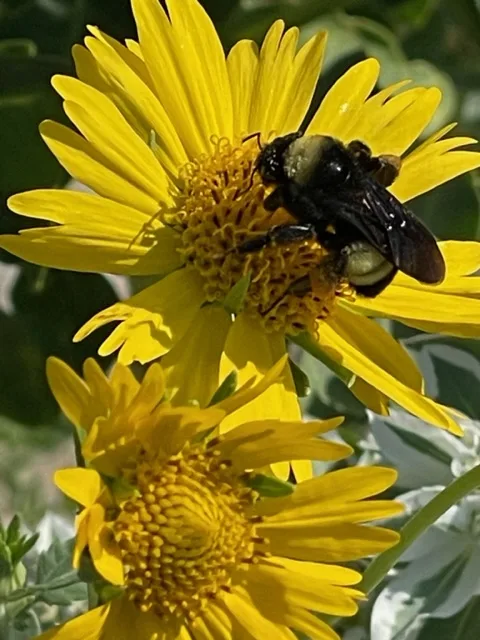‘Snow-On-The-Mountain’-Euphorbia marginata
After spending most of this summer watering almost two acres of pollinator gardens, I had plenty of time to notice what plants were thriving, and the ones that were not in a Stage 4 drought situation. The few plants that were surviving were visited by quite an array of insects. As the beginning of September roles around, the native plant that is doing exceptionally well and covered with pollinators at the Church at Horseshoe Bay is ‘Snow-On-The-Mountain.’ Many people may not be familiar with this native, as I was not myself until moving to this area almost five years ago. It is a native in the mid-west of our country and is very hard to miss.
This Euphorbia was dropped into our gardens by birds, I assume, and has freely reseeded in sunny/part shade spots as it is a self-sowing annual. These seeds have been around since 1828. I have found them for sale at selectseeds.com. Kitchengardenseeds.com sells a foot tall variety called ‘Summer Icicles’. The directions are to soak the seeds for eight hours in warm water or nick the seed coat to speed germination. Directly plant in soil after danger of frost in temps above 40 degrees. Regular soil will do, but it needs to be well-draining. Seeds will bloom in about four months. Ours began blooming the beginning of August after they sprouted in April. It is recommended to pinch them at 6” for more branching, but we have never done that. They grow on a solitary stem with three branching bud shoots at the top. (Photo #1)
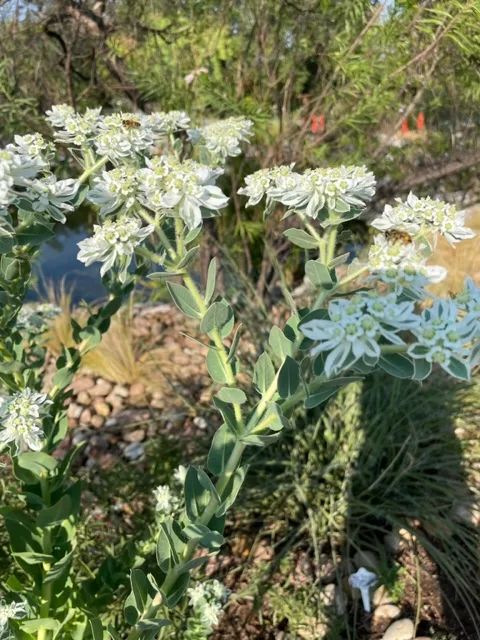
There are whorls of variegated leaves at the top with a cup like structure called a bract, like Poinsettias. These bracts hold 30-35 male and 1 reduced female flower standing in the center at the base of the cup-like involucre. The bottom leaves will be green and the foliage variegation occurs in the petals as the days begin to shorten. (Photo #2)
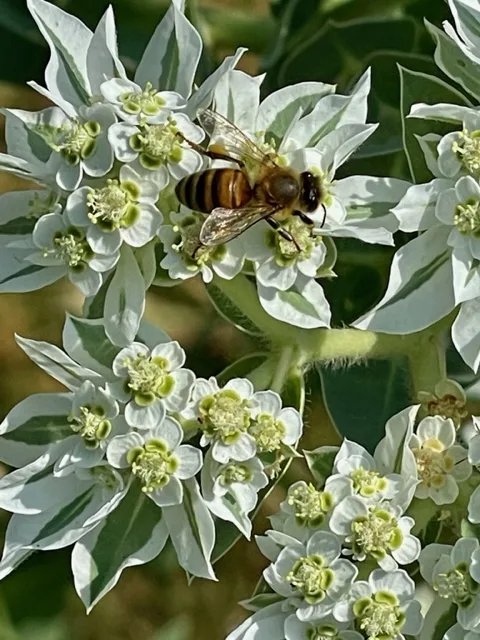
All plants from the Euphorbiaceae Family (Spurge) contain a milky sap that can cause skin irritation or dermatitis. These plants make great cut flower in arrangements and are often used in wedding bouquets. When using them this way, you can dip the ends of the stems in boiling water or flame-sear them for a few seconds. Our Snow-On-The-Mountain are quite tall at around 5’. (Photo #3)
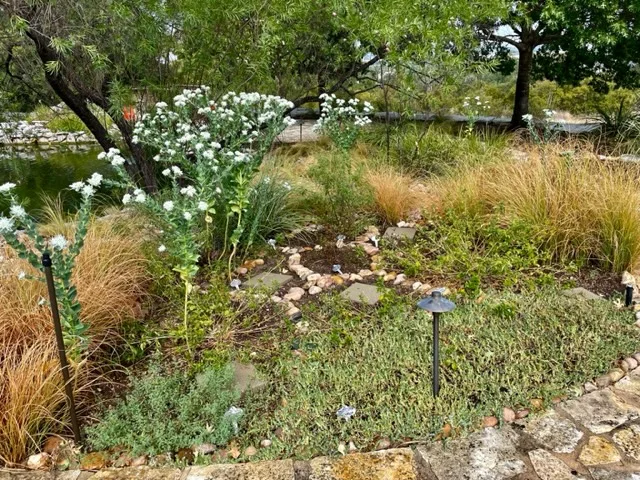
They look best when planted at the back of a bed or encircling a small bed. With the severe drought this summer, they have done much better with regular watering. They look the best with hot-colored annuals in front such as Cowpen Daisies (Verbesina encelioides), Zinnias, or Marigolds. (Photo #4)
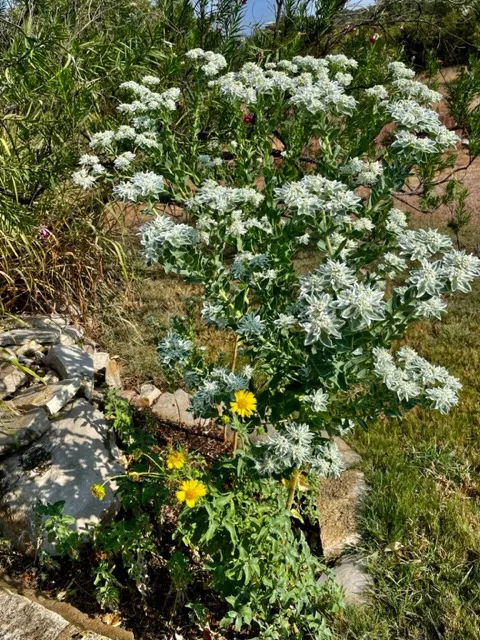
The plant has no major pests to speak of and is open pollinated. Ours have had a variety of pollinators such as bees and Skippers. (Photo #5) It is a wonderful native that more people should be planting, especially when few plants have nectar in such serious drought situations. Give it a try and you will be well rewarded!
